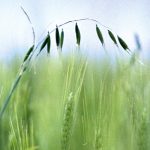
Wild oat a growing resistance challenge
Keep an eye on your fields this summer and be ready to tackle the problem when you see it

Pest Patrol: Why growing cereal crops is bad for weeds
#PestPatrol with Mike Cowbrough, OMAFRA

Manitoba Crop Report: Plantings advance, crops threatened by weeds, insects

More biologicals for pest control on the way
Herbicides are a challenge, but non-chemical insecticides and fungicides may be a cheaper and quicker solution

Pest Patrol: Controlling weed escapes in soybeans – Part 3
#PestPatrol with Mike Cowbrough, OMAFRA

Lack of choice in herbicide options
There may be dozens of brands, but when it comes to choosing herbicide groups to avoid resistance, your options are limited

Pest Patrol: Best practices for weed control in identity-preserved “IP” soybean – Part 1
#PestPatrol with Mike Cowbrough, OMAFRA

Season-long weed control strategies
Don’t only focus on spraying the young ones – also target the escapes before they get a chance to reproduce

Feeling cut off from glyphosate supplies?
The good news is that a shortage opens possibilities for sharpening weed-management skills

PHOTOS: Pest Patrol: Uncommon weeds, Part 3
#PestPatrol with Mike Cowbrough, OMAFRA: These uncommon weeds were found in Ontario field crops during the 2021 growing season


